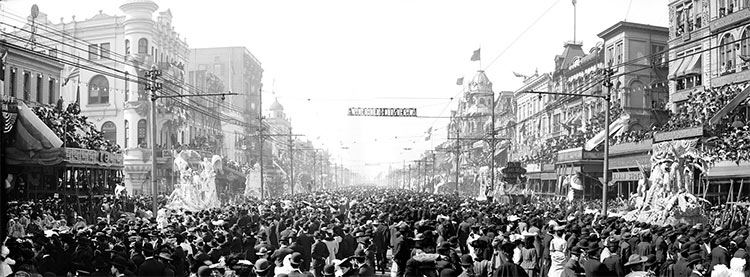The Old and New Worlds of Mardi Gras
How an all-American celebration evolved from the pre-Lent carnivals of the Old World.

‘Laisser le bon temps rouler' - this, the first proclamation of the Queen of Carnival, ushers in two weeks of frenzied masquerading in New Orleans, a city which has to a large extent taken on the mantle of 18th-century Venice as the capital of carnival.
The history of the carnival, which begins on Twelfth Night and culminates in Mardi Gras, the day before Lent, is complicated and turbulent. Its origins lie in ancient, pagan rites of ritual and magic which celebrate the renewed fertility of the land, allied with an equally ancient tradition that a change of clothing or disguise would protect one from the evil spirits which were supposed to roam the land as the old year gave way to the new. These deeply held beliefs, which were often ritually acted out as a form of early theatre, manifested themselves in a period of anarchy and licence.





